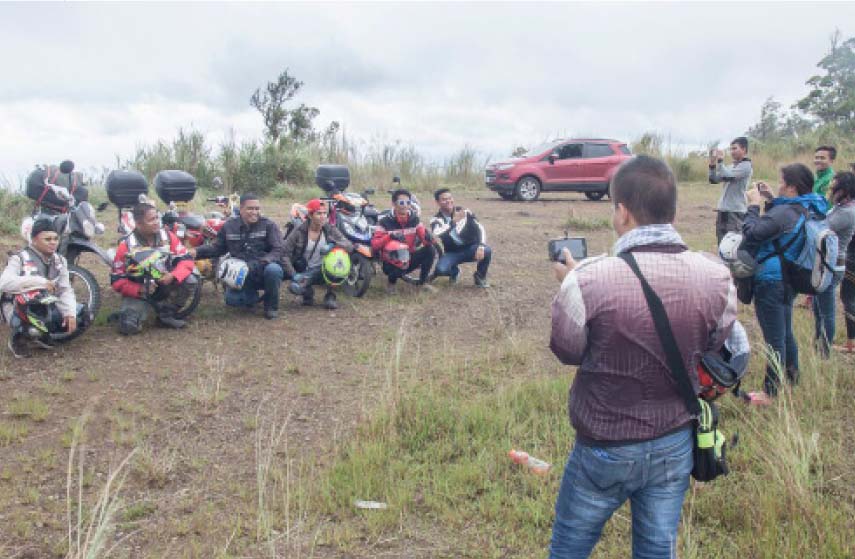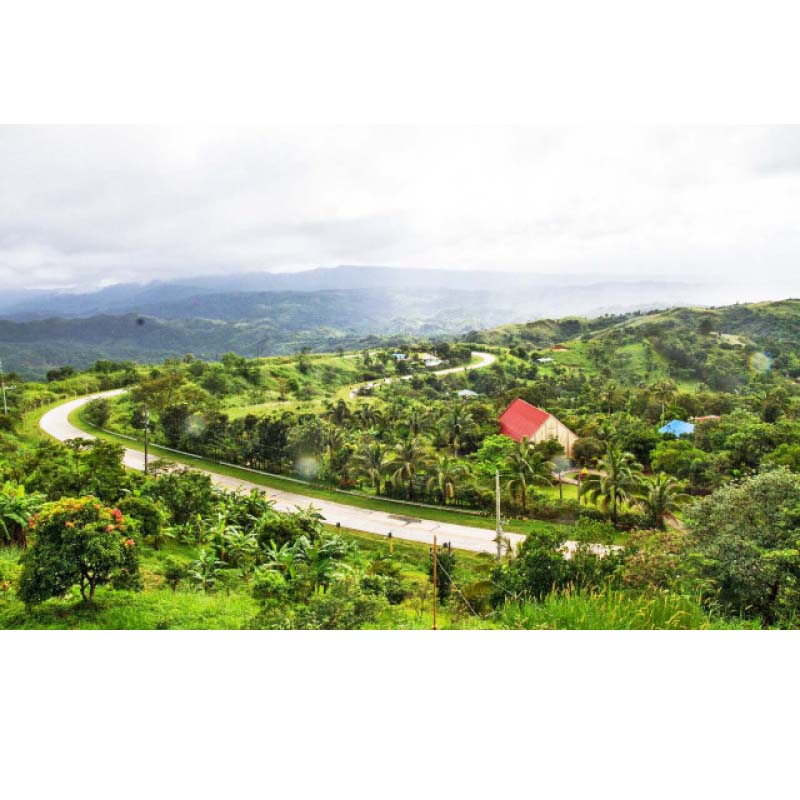
Tagaytay is a popular weekend getaway for many metro people. They drive down south to enjoy the cooler climate, good food and breathtaking scenery. Lately though, Tagaytay is becoming more crowded and more expensive. An alternative: a road trip on the Marilaque Highway up north. Once named after former president Ferdinand Marcos who commissioned it, the road was renamed to distinguish it from two other Marcos highways.
Marilaque Highway was renamed after the provinces that it passes through: Marikina, Rizal, Laguna and Quezon. This two-lane 44 kilometer highway cuts through the mighty Sierra Madre mountain range, offering spectacular views, cool weather and a challenging work out for one’s driving skills. I have traveled on this road before but only reached as far as Tanay. But seeing the road winding its way further through forests and mountains made me very curious to see what lies further on.
It wasn’t until last September when I took to the Marilaque Highway again with a friend. Our goal: reach Infanta, Quezon by noon to enjoy a seafood lunch there. We left the city when the sun was still hiding. It was still hiding when we reached Marikina, but by the time we reached Tanay, it was peeking behind the clouds. As we proceeded, pine trees appeared by the road side. It made us feel we were driving further up to Baguio. In fact, a Tanay resident said that local film and television crew short on time or money or both would film at his town instead of Baguio.
We stopped at Jariel’s Peak on the outskirts of Tanay for breakfast. It was a wood and tin shack. Its lack of electricity and painted walls gave it a rough and tumble feel. The interiors were adorned with flags, posters, stickers and photos of various local biker groups. Its wooden furniture appears to be in a constant state of dampness, due to uncovered windows, enabling the mists outside to come in and leave wet kisses.
Scanning the photos on the wall, it occurred to me that motor biking is now a growing subculture here. But judging by the pictures, most of the local biker gangs seemed to be made up of regular folks with nine to five jobs looking for adventure. They seem far friendlier than their American counterparts who are often portrayed as and associated with criminality and violence.
After securing our table, we proceeded to the counter to place our breakfast order. The menu consisted mainly of popular Filipino dishes like adobo, sisig and kaldereta. But it also had some unusual ones such as sizzling mountain snails and adobong sawa (python). While our minds were curious as to how snails and sawa tasted, our stomachs gave the order and we both opted for the mundane tapsilog and coffee.
Walking outside to the washroom, I discovered that the eatery has a pet monkey named Mimay. Like any monkey, Mimay was frisky and alert, but she was missing a limb and chained to a post. Fearing that she was not really a pet but an item on the menu, I asked the waitress about her. She said that Mimay was already missing a limb when she was brought down from the mountains by a forager. They’d chained Mimay to the post for her own protection, given the condition she was in, to avoid her getting run over by a bike or a car out on the road.
Not far from this eatery, we spotted a basketball blackboard on the side of the road. Aside from being a roadway, Marilaque seems to double as a basketball court when traffic is light. It seems this was where the young men in the area would gather to bond over a game. At the time it was foggy, so if there were a game going on then, I imagined it would have looked like they were playing in the sky.
Further down the highway, the scenery was a feast for the eyes. But we could not afford to let our guard down. A friend who had previously done the same road trip warned of the possibility of wheels skimming over wet grass.
His car had skidded for a few meters before he was able to regain control. It was a close call. And with the recent bus accident in Tanay, drivers need to be vigilant while driving along Marilaque.
As we drove on, we made an unplanned stop at the The Hulk Resort. The life size replica of the character at the entrance made us curious if it was actually a superhero themed resort. But the resort looked like sparse army barracks.We noticed a huge pile of dirt nearby. That was when we met the owner, Douglas Marcaida, who came and explained that it was from the digging done for the new swimming pool. I came to the conclusion that Marcaida was a life-long military enthusiast. This probably explains to some degree the resort’s army camp feel. But I never did get around to ask why he chose the Hulk as the name of the resort. Still, the views of the Sierra Madre Mountain Range from this resort made it a worthwhile stop.
As we drove away from the Hulk Resort, I had formed the impression that compared to the hotels and restaurants around Tagaytay, those around the Marilaque are not as posh or as upscale. Perhaps this is due to the smaller amount of money people traveling along this road were willing to spend. But if more and more travel down this highway, it might attract investors to put up higher class resorts and eateries.
But then again having more people traveling along the Marilaque might not be a good idea as it could result in traffic jams and harm the environment. So perhaps it would be a good idea for local officials to find ways of regulating traffic and monitor pollution first. This would not only benefit the travelers and the lives of people along the highway, but also protect the environment.
As we drove on, we encountered more people on motor bikes. We stopped alongside one group at a vacant lot to observe as they stopped to take their pictures in front of a mist enshrouded scenery. With their helmets off, the men and women look just like the people you work with or people you see on the road. But their laughter and cheers were drowned out by the roar of another type of vehicle that frequent these roads: the luxury sports car. Because of the Marilaque’s curves, it is becoming a favorite among Manila’s elite auto-racing enthusiasts.
We got back on the road, intent on having a seafood lunch at the end of our journey in Infanta, Quezon. But a washed out bridge put a stop to our plan. The Querocep Bridge was washed out by landslide in December 2015 caused by the double whammy of Typhoon Nona and Tropical Depression Onyok. So while waiting for the Department of Public Works and Highway to repair the bridge, folks living nearby have constructed a small bridge.
It is sturdy enough to accommodate motorcycles, though they have to pay a toll to cross it. But the bridge is too narrow and frail to handle four-wheel vehicles. Drivers have to make a U-turn and find alternative routes to Infanta. So it was here where the nimble motorbike herds triumphed over their bigger and bulkier four-wheeled cousins. As we were making that U-turn, we decided to head back to Marikina. We did not feel it was worth traveling an extra hour for lunch in Infanta. The Marilaque has won this time. But I will find a way to travel down this highway again and hopefully this time manage to end up in Infanta!
